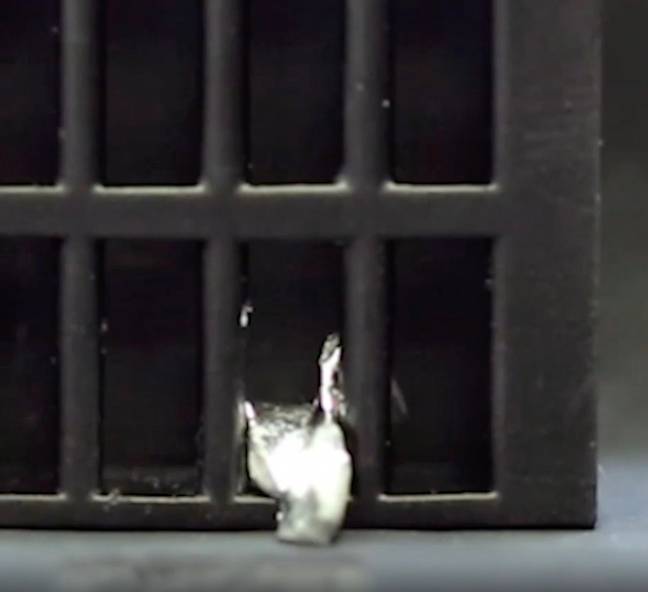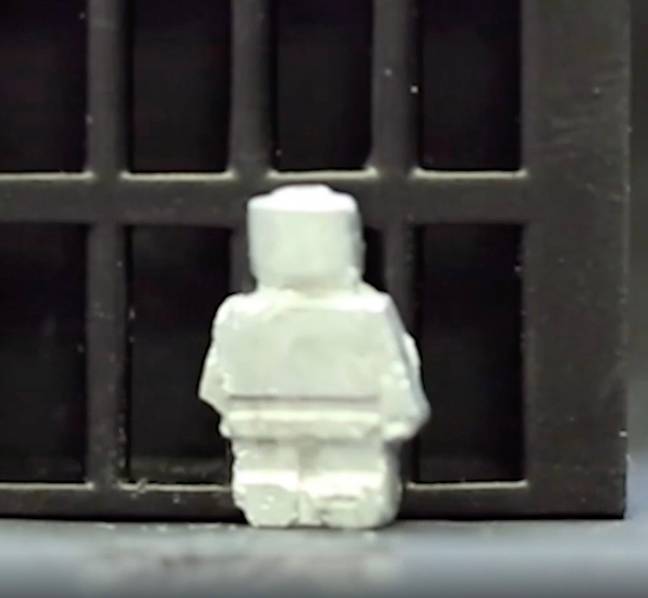
Featured Image Credit: Chinese University of Hong Kong
If you’ve ever seen the 1991 classic Terminator 2: Judgement Day, you will know all about the terrifying psycho-bot the T-1000.
While for many of us it was just a terrifying fantasy, scientists have been hard at work making it a reality. And it looks like they’ve succeeded. Gulp:
Researchers at Carnegie Mellon University and the Chinese University of Hong Kong have been working on a new material that can reform itself, moving quickly between a solid and a liquid.
Dubbed Magnetoactive phase transitional matter (MPTM), the material was created by merging magnetic neodymium-iron-boron microparticles with gallium, a metal that melts at incredibly low temperatures – just 29.8C.
Footage shared from their experiments, shows a prototype of the bot that can be seen standing in a cage, seemingly trapped.

But while most solid objects would be just that, stuck, the MPTM is able to manoeuvre itself around the bars and out to freedom.
In the short clip, the block of metal suddenly collapses on itself as the temperature is increased, and oozes through the bars.
It then slides out and reforms into a solid block as the temperature drops again.
As I said, if you’ve seen T2, this will bring back strong memories of Robert Patrick walking through a gate as he chases Arnie and Sarah Connor through the hospital ward.
While some may be worried that this is a sign of an eventual robot rebellion, fear not, Doctor Chengfeng Pan says there are real benefits to these bendy bots.

“Giving robots the ability to switch between liquid and solid states endows them with more functionality,” he said in the study published in Matter.
“Now, we’re pushing this material system in more practical ways to solve some very specific medical and engineering problems.”
Discussing the development process of the new material, Professor Carmel Majidi, the senior author of the study, said: “The magnetic particles here have two roles.
00:0200:35

“One is that they make the material responsive to an alternating magnetic field, so you can, through induction, heat up the material and cause the phase change.
“But the magnetic particles also give the robots mobility and the ability to move in response to the magnetic field.”
She went on: “Where traditional robots are hard-bodied and stiff, soft robots have the opposite problem; they are flexible but weak, and their movements are difficult to control.
“Giving robots the ability to switch between liquid and solid states endows them with more functionality.”








